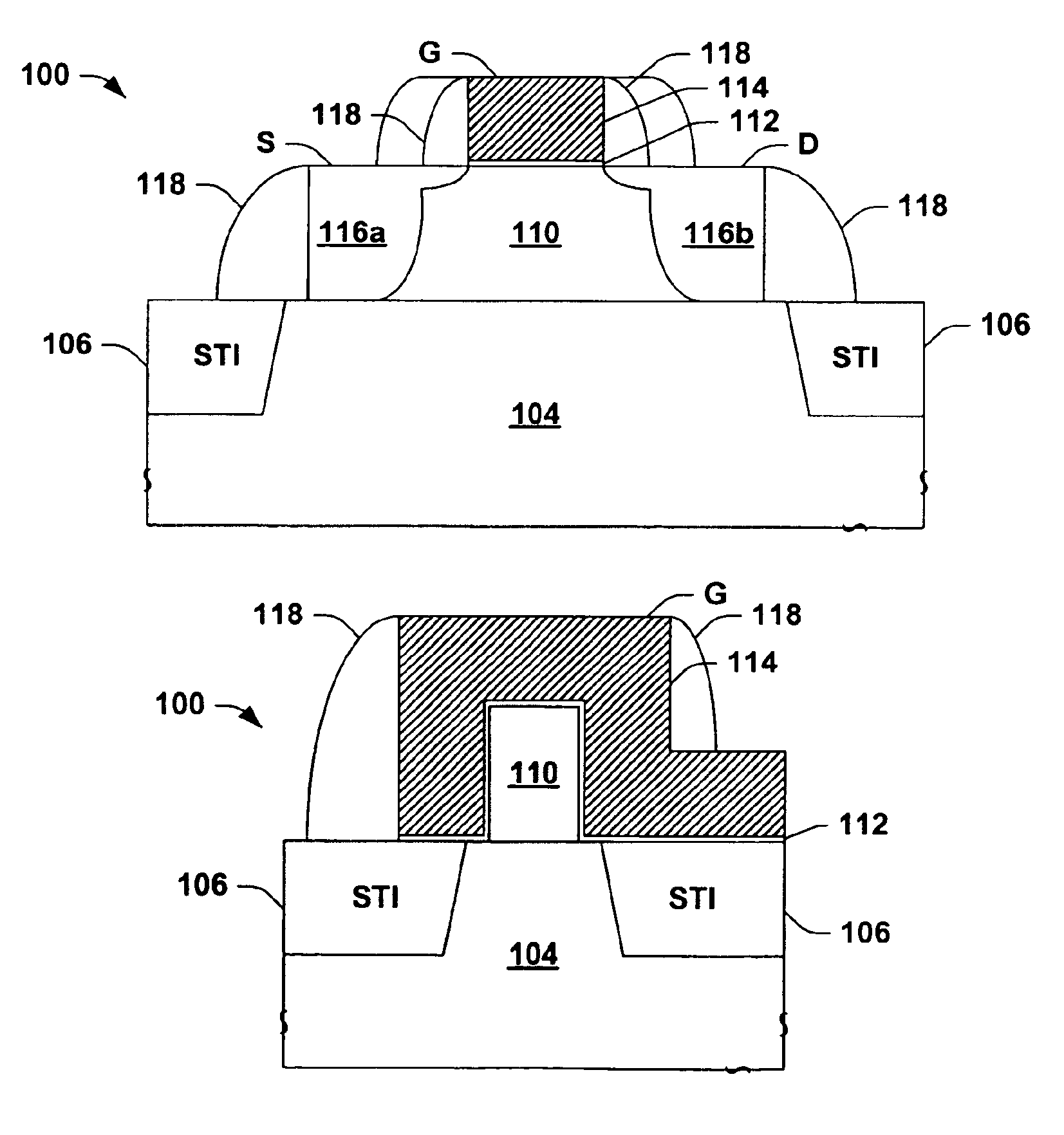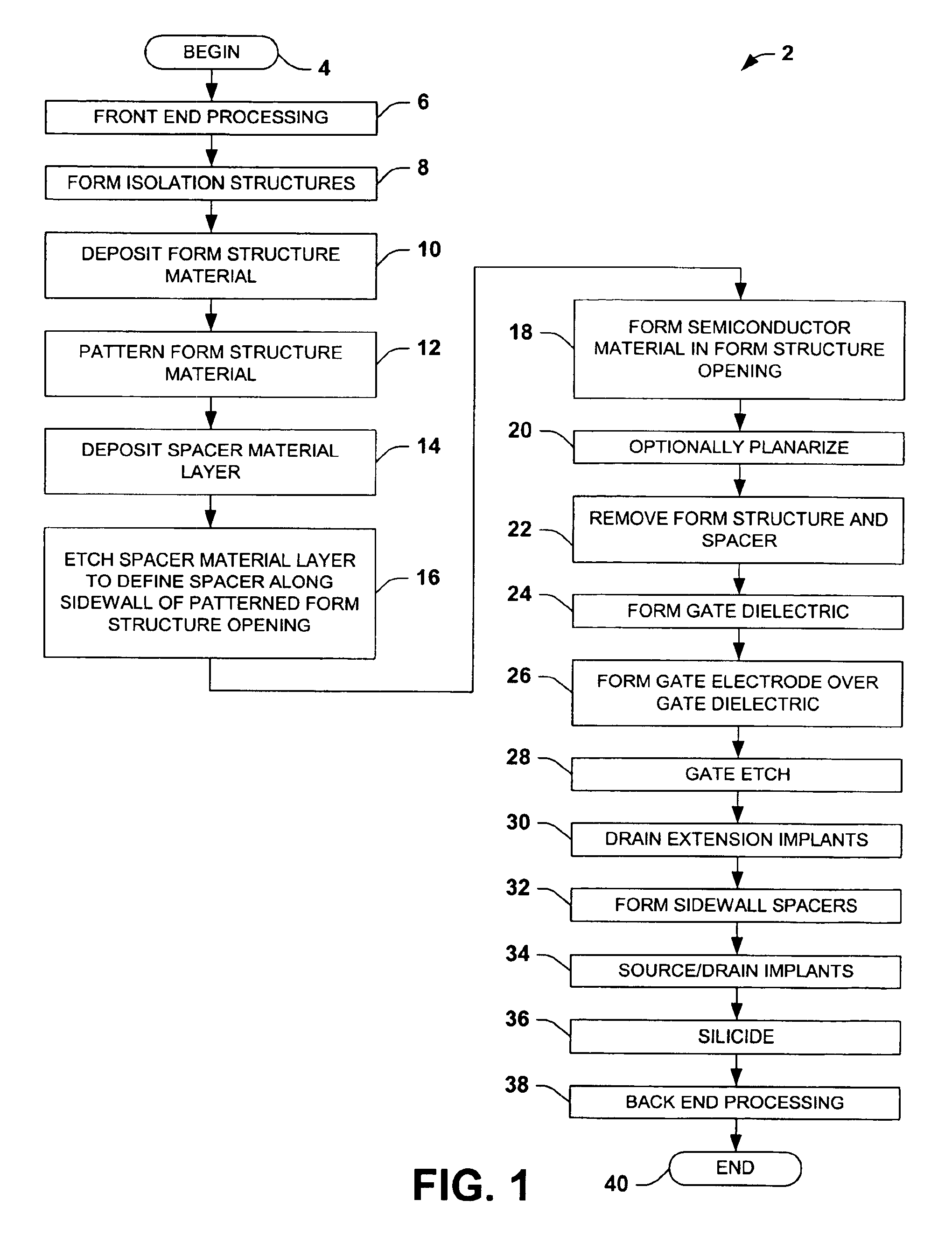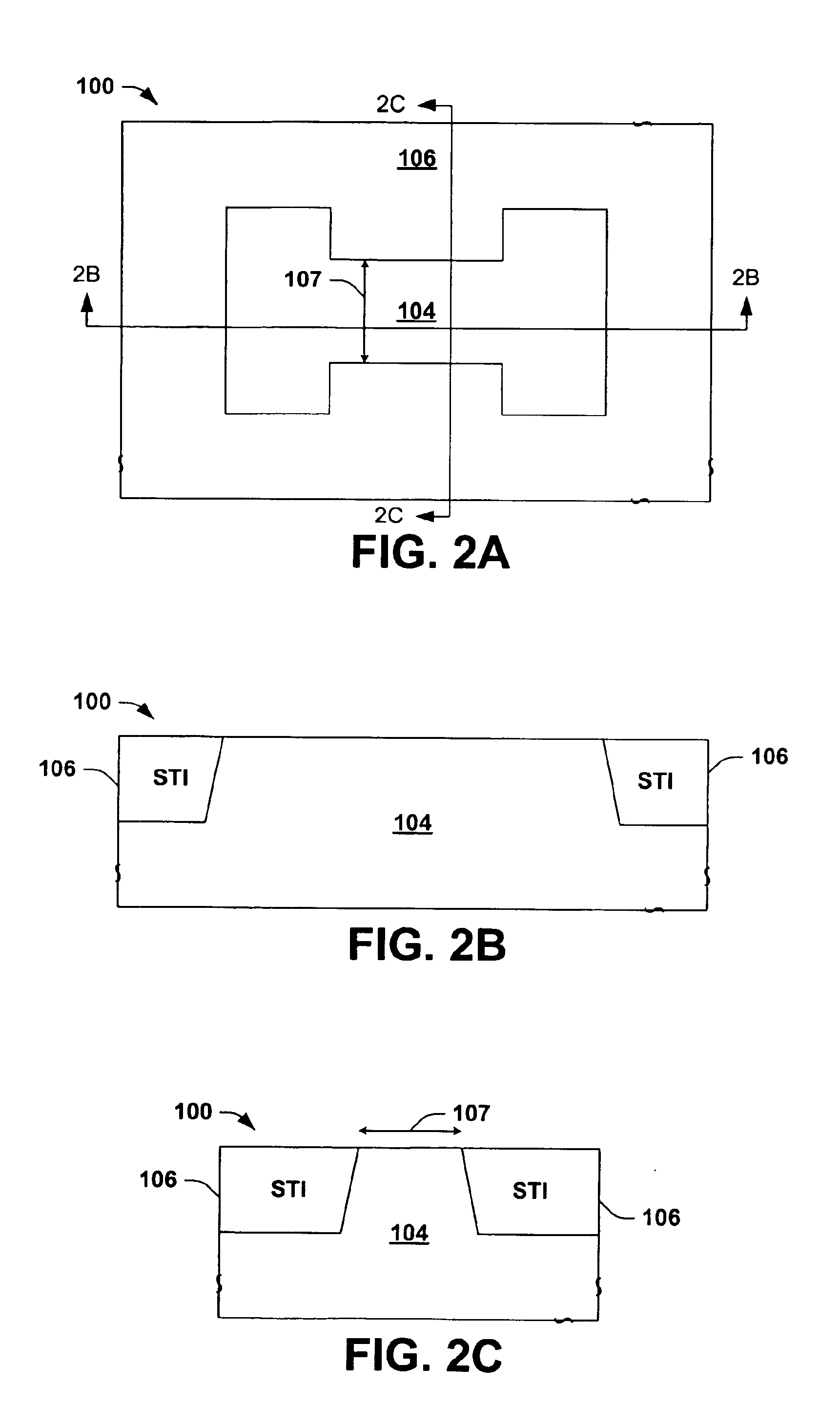Multiple-gate MOSFET device with lithography independent silicon body thickness and methods for fabricating the same
a mosfet transistor and lithography independent technology, applied in the field of semiconductor devices, can solve the problems of increasing off-state current, limiting the extent to which transistor dimensions can be reliably scaled, and performance limitations are also a barrier to scaling conventional planar transistor dimensions, so as to reduce the effect of short channel effects, avoiding or reducing adverse effects
- Summary
- Abstract
- Description
- Claims
- Application Information
AI Technical Summary
Benefits of technology
Problems solved by technology
Method used
Image
Examples
Embodiment Construction
[0020]The present invention will now be described with reference to the attached drawing figures, wherein like reference numerals are used to refer to like elements throughout, and wherein the illustrated structures and devices are not necessarily drawn to scale. The invention relates to transistor devices and fabrication methods wherein a semiconductor body is provided over a starting structure with a semiconductor body dimension that is independent of lithography technology limitations. This allows tuning or optimization of transistor performance, including improved volume inversion in a multi-gate transistor channel, wherein the semiconductor body or thickness can be made smaller than the device gate length, for example, less than half the gate length.
[0021]In the examples illustrated and described below, the semiconductor body is formed in a cavity of a temporary form structure having spacers therein, through deposition of epitaxial silicon or other semiconductor material, where...
PUM
 Login to View More
Login to View More Abstract
Description
Claims
Application Information
 Login to View More
Login to View More - R&D
- Intellectual Property
- Life Sciences
- Materials
- Tech Scout
- Unparalleled Data Quality
- Higher Quality Content
- 60% Fewer Hallucinations
Browse by: Latest US Patents, China's latest patents, Technical Efficacy Thesaurus, Application Domain, Technology Topic, Popular Technical Reports.
© 2025 PatSnap. All rights reserved.Legal|Privacy policy|Modern Slavery Act Transparency Statement|Sitemap|About US| Contact US: help@patsnap.com



